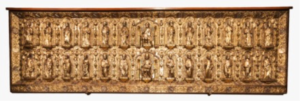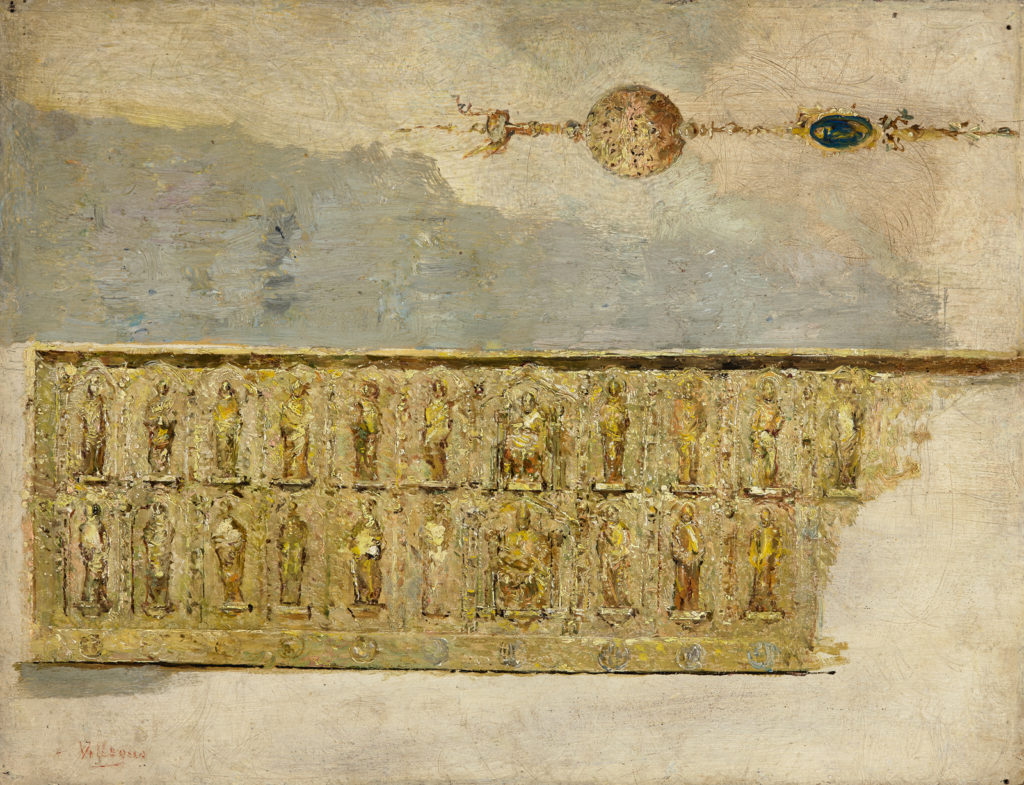José Villegas Cordero
(Seville 1844 - 1921 Madrid)
Study of the Altar Frontal in San Marco, Venice
Oil on panel, 21 x 27 cm
Signed lower left Villegas
Provenance:
Private collection, Spain.
José Villegas Cordero was not only one of the most important Spanish painters of the early twentieth century, but also the director of the Museo del Prado in Madrid for seventeen years.
Upon the completion of his studies in Seville, José Villegas Cordero first worked in the studio of Federico de Madrazo y Kuntz in Madrid; at the Prado he trained by copying the work of Velázquez, whose art exerted a decisive influence on him. After returning from a trip to Morocco, Villegas settled in Rome in late 1868. Thirty years later he became director of the Spanish academy of fine arts there (Academia española de Bellas Artes en Roma). In this period he produced numerous history and genre paintings in oil and watercolor. Villegas returned to Madrid in 1901 and became director of the Museo del Prado that same year.1
Starting in 1877, he also made frequent, extended visits to Venice. The history of La Serenissima inspired him to create important works, including The Triumph of the Dogaressa Maria Foscari, 1882-1893, and The Celebration of the Marys, 1888.

Fig. 1 Antependium of the Altar of Gregory XII, 1406-1408, treasury of San Marco, Venice, inv. no. N. 171
Our oil sketch is connected with two sacred objects from the Basilica of San Marco: an antependium, or altar frontal, and the suspension of a filigree chandelier. Villegas used loose brushstrokes to sketch the chased gold foil and painting of the antependium, which was made around 1406 as a gift for Pope Gregory XII. In 1807 the object was transferred from Venice’s former Cathedral of San Pietro di Castello to San Marco, where it was used as an antependium for the Pala d’oro (the retable of the high altar).2 Today it is kept in the Tesoro di San Marco (the cathedral treasury), but is still used to dress the altar on special occasions. Saint Peter, flanked by other saints, appears in the upper register, while the lower register features Christ enthroned in the midst of his apostles (fig. 1).
The second object of study is a detailed section of the chandelier hanging in the main cupola of San Marco. Villegas focused his attention on the splendid suspension which consists of a filigree sphere in silver-gilt and a large, blue precious stone in a setting.
1 Cf. José Villegas Cordero (1844-1921), exhib. cat. Seville, Museo de Bellas Artes, Córdoba, Sala de Exposiciones Museísticas CajaSur, Córdoba 2001, pp. 53-103.
2 Cf. Banca Dati dei Beni Culturali della Regione del Veneto (http://beniculturali.regione.veneto.it/xway-front/application/crv/engine/crv.jsp) (26 September 2016).

